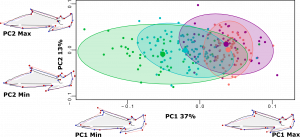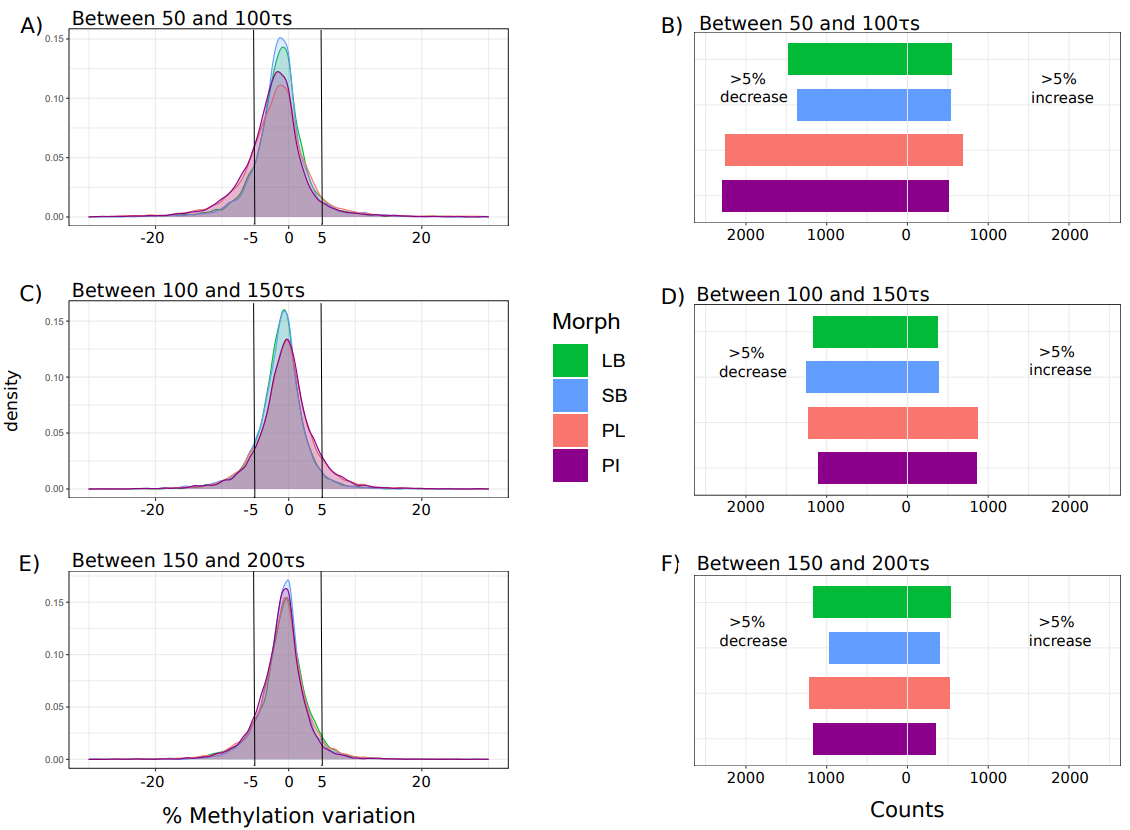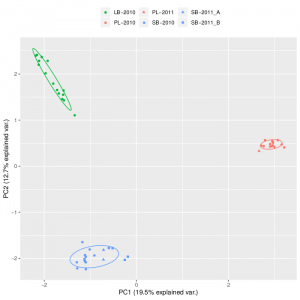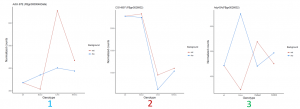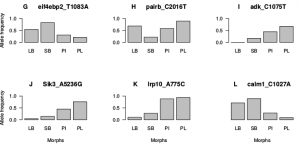Variation in personality shaped by evolutionary history, genotype, and developmental plasticity in response to feeding modalities in the Arctic charr
Variation in personality shaped by evolutionary history, genotype, and developmental plasticity in response to feeding modalities in the Arctic charr
AUTHORS
Marion Dellinger, Sarah E. Steele, Evert Sprockel, Joris Philip, Arnar Pálsson, David Benhaïm
Submitted manuscript, sorry not on BioRxiv.
ABSTRACT
Animal personality has been shown to be influenced by both genetic and environmental factors and shaped by natural selection. Currently, little is known about mechanisms influencing personality traits development. This study examines the extent to which personality development is genetically influenced and/or environmentally responsive (plastic). We also investigated the role of evolutionary history, assessing whether personality traits could be canalized along a genetic divergence gradient. We tested the plastic potential of boldness in juveniles of five Icelandic Arctic charr morphs (Salvelinus alpinus) displaying various degrees of genetic divergence from the ancestral charr, split between treatments mimicking benthic vs. pelagic feeding modalities. We show that differences in mean boldness are mostly affected by genetics. While the benthic treatment led to bolder individuals, the environmental effect was rather weak, suggesting that boldness lies under strong genetic influence with reduced plastic potential. Nevertheless, the repeatability of boldness response to treatment varied among morphs, suggesting the early environment may drive personality emergence within populations. Finally, we found hints of differences by morphs in boldness canalization through reduced variance and higher consistency in boldness within morphs. These findings provide new insights on how behavioural development may impact adaptive diversification.
